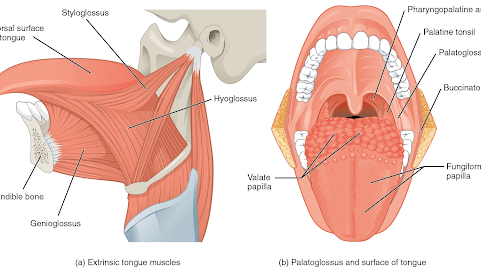Ankyloglossia (Tongue Tie)
&srotate=0)
Dr. Barker has a special interest in this medical condition. He always knew that his own tongue was too tight, but had no idea that it was the underlying problem to many of his medical complaints. After learning more about tongue and lip ties because one of his patient’s had his corrected, he had his tongue and lower lip released. This significantly improved his neck pain, headaches, posture and nasal congestion and cured his obstructive sleep apnea! He has become passionate about diagnosing and treating this problem for his patients.
Ankyloglossia (aka tongue tie) as well as tethered labial frenulums (aka lip ties) are common anatomical abnormalities that adhere the tongue to the floor of the mouth or the lip to the gums limiting normal range of motion. This is something that people are born with and can cause problems at any age.
The tongue is involved in all of the following activities:
- Speech
- Taste
- Chewing
- Clean food out of our teeth
- Digestion of food
- Drinking
- Absorbs certain substances
- Swallowing
- Sucking
- Breathing
- Tip of the the tongue is very sensitive to touch
- Immune response (lingual tonsil)
- Express affection (kissing)
Tongue Anatomy
Epidemiology
- Incidence of approximately 5%
- More common in males by a 3:1 ratio
- Can be sporadic or genetic (mutations in the T box transcription factor TBX22 may lead to heritable ankyloglossia with or without cleft lip, cleft palate, or hypodontia
Functional Classification of Ankyloglossia Based on Tongue Range of Motion

*Photo Reference: Toward a functional definition of ankyloglossia: validating current grading scales for lingual frenulum length and tongue mobility in thanks 1050 subjects Authors: Yoon et al.
Problems Associated with Ankyloglossia
Each individual may have one or multiple of the following problems:
Newborns
- Feeding difficulties
- Muscle tightness
Toddlers/Children
- Speech problems
- Swallowing problems
- Obstructive Sleep Apnea (OSA)
- Teeth crowding
- Mouth breathing
- Nasal congestion
- High, narrow palate
Teens/adults
- Posture problems
- Obstructive Sleep Apnea (OSA)
- Neck pain
- Headaches
- TMJ
- Anterior and/or posterior cross-bite
- Teeth grinding/jaw clenching
- Disproportionate growth of the mandible and maxilla
Obstructive Sleep Apnea
The upper airway is a collapsible tube submitted to negative intrathoracic pressure during inspiration. During sleep, there is an increased risk of collapsibility due to the change of muscle tone along with the recumbent position associated with sleep.

Dr. Barker’s Before and After Tongue Tie Release Sleep Studies Showing a Resolution of Obstructive Sleep Apnea

Sleep Study Before

Sleep Study After
Posture Problems
Muscles involved with the tongue develop excessive tone under the jaw and chest. The hyoid bone gets pulled back and up (may cause airway restriction). This initiates a forward head posture to maintain an open airway and the shoulders roll forward. Patients can even develop excessive curvature of the thoracic spine called a Dowager’s hump.
Before and After Tonge Tie Release Posture Photos


Treatment
- Identify tongue and lip ties present
- Pre and post frenectomy/frenuloplasty oral myofunctional therapy (neurological re-education exercises to assist in normalization of developing, or developed, craniofacial structures and function)
- Pre and post frenectomy/frenuloplasty osteopathic manipulative treatment
- Frenectomy/Frenuloplasty (laser or scissor/scalpel)
